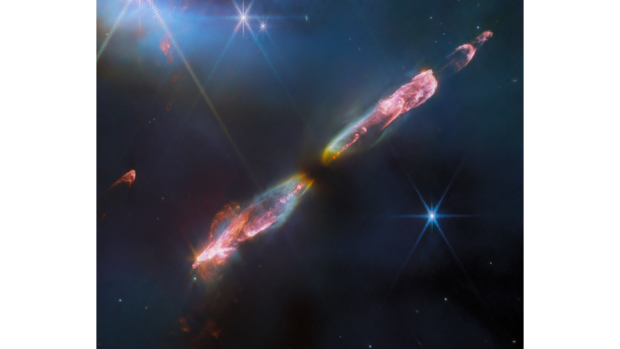Unprecedented Webb image shows newborn star's outflow moving at supersonic speeds
An otherworldly image captured by the powerful James Webb Space Telescope shows the outflows surrounding a fast-moving newborn star that will someday grow into a cosmic body like the sun.
The image shows the star and the Herbig-Haro objects surrounding it. Herbig-Haro objects are "luminous regions" that appear around newborn stars and are formed when stellar winds or jets of gas form shock waves that collide with nearby gas and dust particles at high speed, NASA said in a news release Thursday.
The image shows a series of shocks to the southeast and northwest (the lower-left and upper-right areas of the image) that look like colorful plumes extending in either direction.
The photo is "roughly 5 to 10 times higher spatial resolution" than any previous image of the star and the objects, NASA said.
According to earlier observations of the star and the shocks, the shocks are both moving away from and towards Earth. The lower-left plume is moving towards our planet, NASA said. However, the shocks are moving "relatively slow in comparison to more evolved" types of the same star.
The star is an "infantaile analog" of the galaxy's sun, NASA said. In other words, it resembles the sun when it was "no more than a few tens of thousands of years old." Right now, the star's mass is only 8% that of the present-day sun.
The photo was captured with infrared imaging, which is used to study newborn stars and outflows and able to see through the gas of molecular clouds in which stars form. Molecules within the star and outflows emit infrared light, which Webb can use to map a structure.




